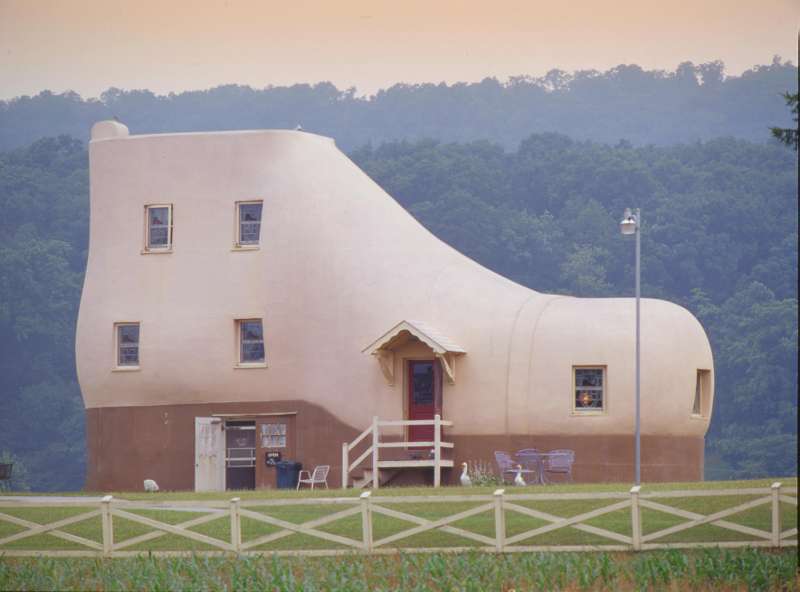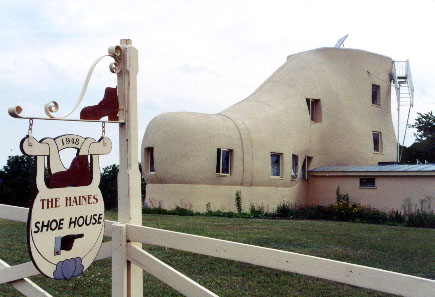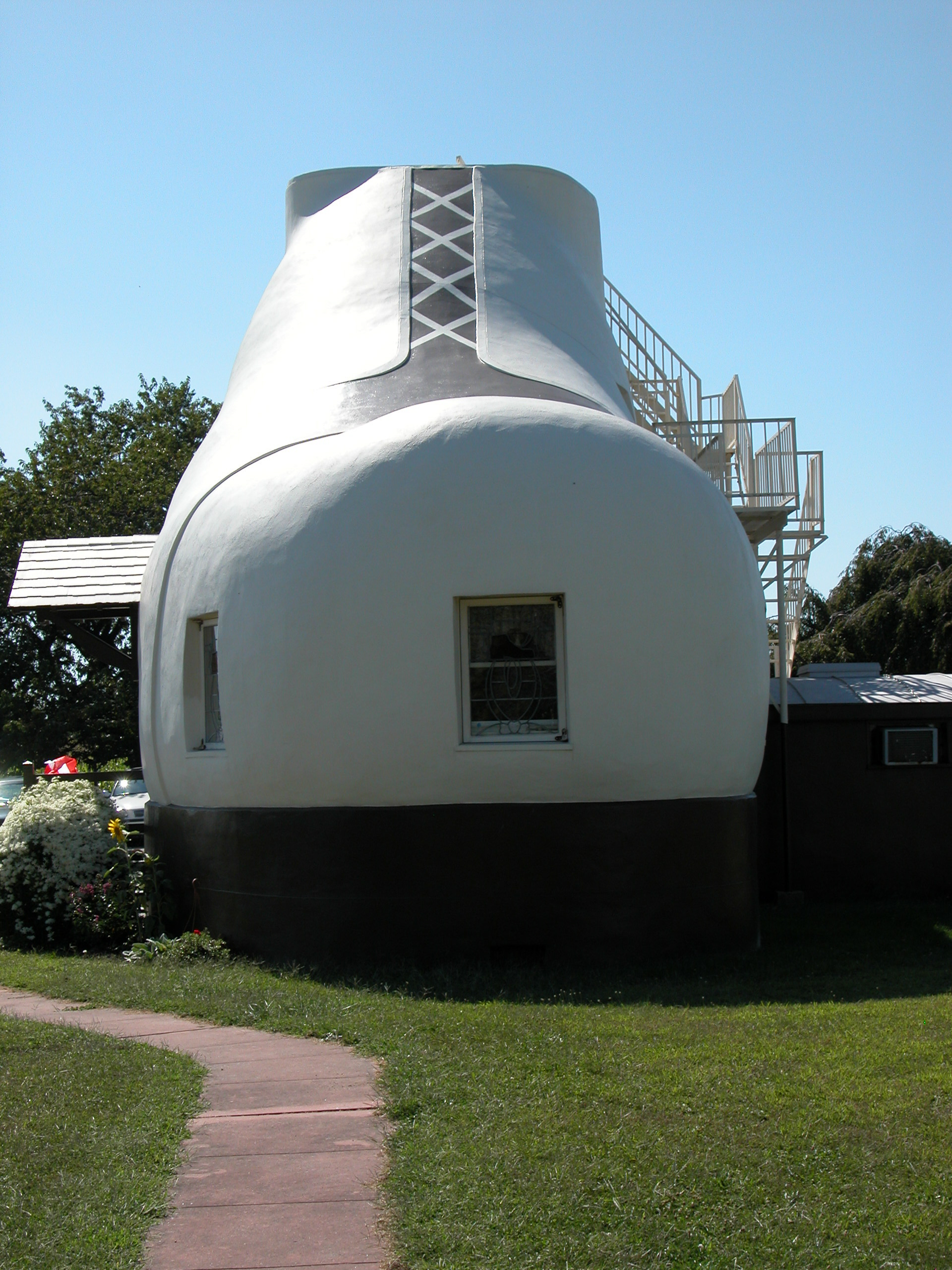Strange Houses: Haines Shoe House
Hellam, Pennsylvania
The Shoe House was built in 1948 (and completed in 1949) by Colonel Mahlon M. Haines, the flamboyant "Shoe Wizard," for advertising purposes. Haines walked up to an architect, handed him an old work boot, and said "Build me a house like this." Haines owned forty shoe stores in Maryland and Pennsylvania, was a millionaire and an honorary Indian chief, and knew the value of self-promotion. Haines would stand up at baseball games and offer $20 to anybody who knew who he was.
 A short drive up Shoe House Road, and that pinkish stucco boot looms up on the left. There's a shoe mailbox out front, and a boot-decorated fence surrounding the yard. The dog house is shaped like a boot. Every window in the Shoe House is decorated with a stained-glass shoe. The front door frames a stained-glass portrait of the Colonel holding shoes.
A short drive up Shoe House Road, and that pinkish stucco boot looms up on the left. There's a shoe mailbox out front, and a boot-decorated fence surrounding the yard. The dog house is shaped like a boot. Every window in the Shoe House is decorated with a stained-glass shoe. The front door frames a stained-glass portrait of the Colonel holding shoes.
The 25-ft. tall, 48 ft. long work boot was constructed near the highway, where drivers could see the giant advertisement for his store. But the Shoe Wizard, a generous man, also wanted to "give back," as they say, to the community. So he made the shoe available as a weekend vacation spot for 38 elderly couples each year (Yes, the elderly -- exactly who we would pick to stay in a 5-level, cramped staircased, low-ceilinged oddity).
Haines also invited lucky newlyweds affiliated with his shoe stores to spend a romantic week in the shoe, served by a live-in butler and maid. And everyone went home with free pairs of shoes. The vacation "king and queen" treatment continued for a few seasons, and then the Shoe House settled into a groove as a local oddball landmark.
Today, as then, the house is cramped by the geometry of shoe architecture, with guides gesturing to Shoe Wizard-abilia around the corner, while tour guests carefully avoid putting elbows through the stained-glass windows. There are historic photos, and promotional items devised by the Wizard, such as the fans he gave to each visitor.
The tour now features more on the "butler" and the "maid," their separate quarters and shared sink-- quite amazing that they could fit in the Shoe House at all with rollicking newlyweds and octogenarians. We understand why the explosion of 1950s suburbia didn't spawn endless rows of shoe houses.







0 commenti